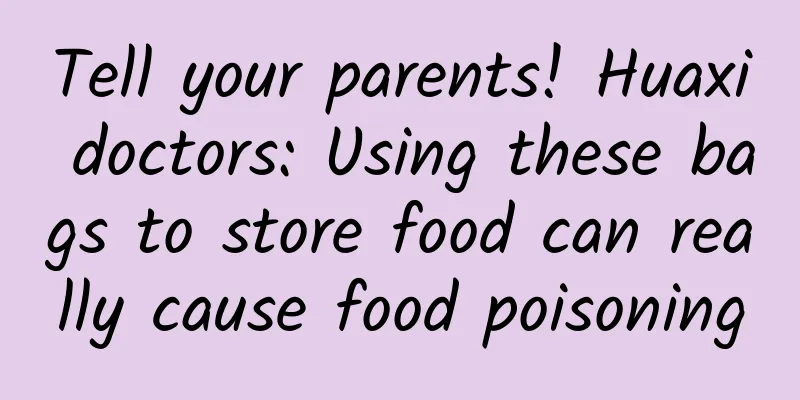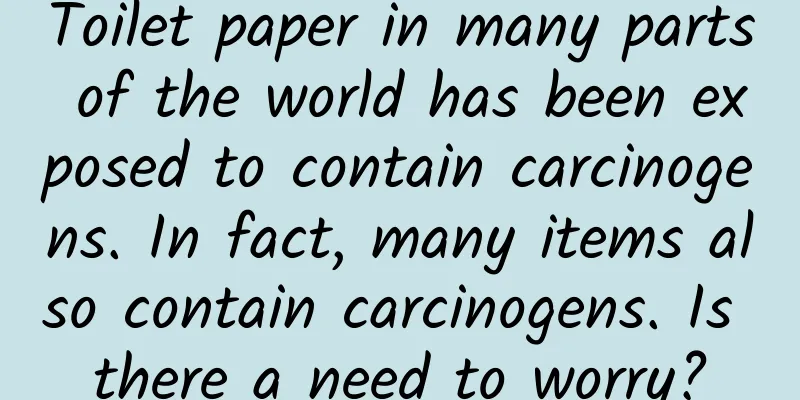Tell your parents! Huaxi doctors: Using these bags to store food can really cause food poisoning

|
The old-style pickled cabbage of 315 is still fresh in my memory Last month, food additives were a hot topic again. He can't even have a meal in peace! Food safety has always been a matter of great concern to everyone. But in fact, food safety is not only about ingredients and cooking methods, but also about packaging. This is a link that is easily overlooked. For example, the "plastic containers" most commonly used for takeout have very particular requirements on shelf life and heat resistance. To learn more about the details, let Dr. Xu Miao from the Clinical Nutrition Department of West China Hospital, Sichuan University explain it to you! ▽ If someone says "plastic" now, the first thing that comes to mind is definitely not something as superficial as plastic bags, but words that have been given new life, such as plastic sisters, plastic friendship, etc. But "plastic" has more than just a new meaning. It may also have its own shelf life, category characteristics, applicable scenarios, etc. These are the real things that are closely related to food safety! ● For example, mineral water bottles made of PET usually contain catalysts, antioxidants, heat stabilizers and other additives containing heavy metals such as lead, tin and antimony during production. These substances can easily release heavy metal elements at high temperatures and cause harm to the human body. ● For example, plastic water cups that are used at high temperatures for a long time will age prematurely and easily release non-beneficial additives and microplastics. Plastic, like food, also has a shelf life. For example, the stability period of a mineral water bottle is about 10 months. After this time, it may release harmful substances. High temperature is a catalyst Unleashing the hidden dangers of plastic So how do we avoid it? In fact, most plastics have classification labels. In principle, plastic containers without any labels cannot come into direct contact with food. Some have applicable scenarios indicated, while others directly display their "identity cards." It is up to everyone to determine the different uses of each type. 5 common scenarios + 7 major plastic categories Dr. Xu used a picture to make the key points clear. First look, second recognize, third distinguish The last step is to combine the actual Let everyone grasp these knowledge points at one time! Any safety is relative. As long as plastic products are produced in accordance with national standards, marked with food grade as required and used reasonably, they can be considered safe for our food. In life, we should pay special attention to these three points, which can effectively reduce the health risks brought by plastic containers: 1. Plastic containers without "ID cards" are best not used; 2. Food grade plastics are preferred; 3. Use according to the usage scenario and do not exceed the scope or conditions. ★ Plastic containers must be selected correctly and used correctly! Therefore, the third point is particularly important. We can give you a few more common problems to analyze and deepen your memory! ask Can mineral water bottles be reused? answer No, really not any more. The reuse exceeds the application range of ordinary mineral water bottles (No. 1). In addition, special reminder: it is recommended to use No. 1 and No. 7 for room temperature ice water, and No. 5 or Tritan material is required for hot water. ask Can disposable lunch boxes be used to store oily foods? answer Not recommended~ Generally speaking, plastics are less oily and less hot, so it is not recommended to use disposable plastic lunch boxes to store oily food, let alone heat it. If you really need to put it in the microwave, only No. 5 can be used; No. 2 and No. 4 can be used to warm room temperature food, and No. 3 and No. 6 should be kept away from food as much as possible. ask Can the steamed buns in a plastic bag be put into the microwave? answer That’s not possible! Normally, the plastic bags used to pack buns are made of No. 2 or No. 4 materials, which are not suitable for microwave ovens. At the same time, buns are rich in fat, and the heating temperature in a microwave oven can easily exceed 100°, which exceeds the tolerance temperature of plastic bags, and harmful substances in the bags will migrate into the food. It is recommended to heat the buns in glass or ceramic containers. Used plastic bags cannot be used to store food But you can put garbage Plastic water cups are not safe, so we bring our own glass ones. For our health and the health of the environment If you find this article helpful, please share it ! If you have any other questions about food safety, please leave a comment! |
<<: UN report: One-third of World Heritage glaciers could disappear by 2050
>>: What’s so special about a football player’s dining table?
Recommend
Can you eat sweet potato vermicelli mixed with cassava flour?
Audit expert: Wang Kang Director of the National ...
Tmall Double 11 event marketing tactics!
On Double 11 in 2019, Tmall’s final transaction v...
Microsoft's new plan: developing games for augmented reality device HoloLens
Phil Spencer, head of Microsoft's Xbox divisi...
What is the lunar calendar date for Spring Festival 2022? What specific day is it? Is it March 21st?
There are many customs that have been passed down...
Developer’s statement: This is how I learned GAN
Generative Adversarial Network, or GAN, is a well...
[Recommended blog post] Real-time rendering of seawater on Unity3D mobile terminal
This blog post is from 51CTO blogger jxw167. If y...
Detailed illustration of the review process for Google Analytics and Google Ads!
Google Ads is an important platform for online me...
Seven tips to teach you how to play with self-media!
In recent years, as the earlier batches of person...
To Xiaomi: Blessings and disasters lie somewhere in between
In the mobile phone industry, Xiaomi is a special...
Practical Tips丨A review of the four creative points in financial management advertising
According to the industry delivery report previou...
Why a table and a pen? The key to understanding Chinese civilization lies in this dictionary
Why is it a table? Why is it a pen? The answers t...
How to promote the mini program after it is developed by the mini program development company?
1. Search ranking There are many factors that aff...
Useful information: A comprehensive promotion strategy for Internet new media platforms!
Today, new media with social attributes represent...
How much does it cost to create a homestay mini app in Zhengzhou?
How much does it cost to produce a Zhengzhou home...






![[Smart Farmers] Why the beautiful Canada goldenrod became the "devil's flower"](/upload/images/67f2536e43c0e.webp)


